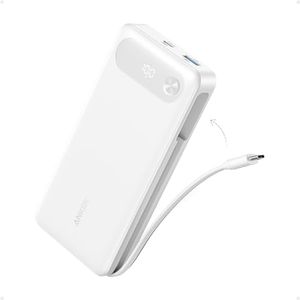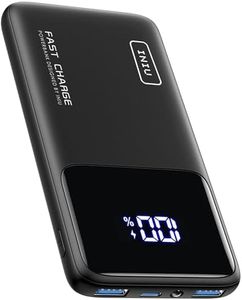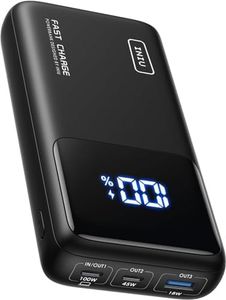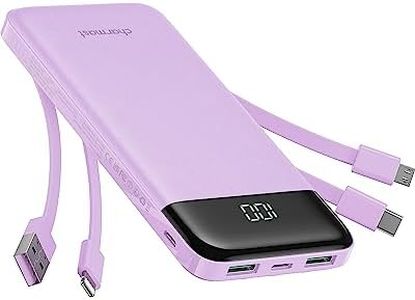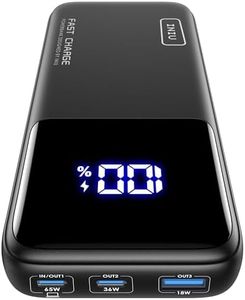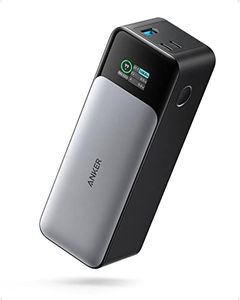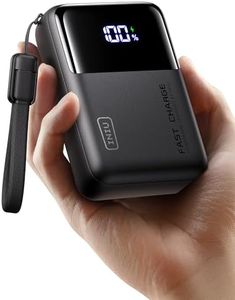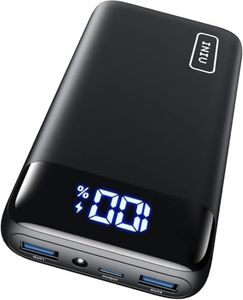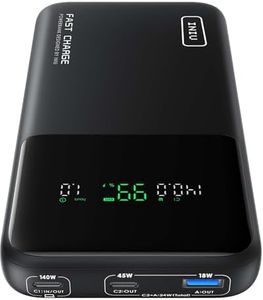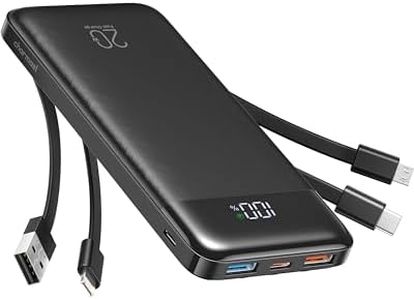We Use CookiesWe use cookies to enhance the security, performance,
functionality and for analytical and promotional activities. By continuing to browse this site you
are agreeing to our privacy policy
10 Best Power Banks
From leading brands and best sellers available on the web.Buying Guide for the Best Power Banks
When choosing a power bank, it's important to focus on how it will fit your daily charging needs. A good power bank should balance portability, charging speed, and capacity, so you always have enough backup power when you need it. Before buying, think about what devices you’ll be charging—like phones, tablets, or laptops—and how often you'll be away from a wall outlet. You'll also want to consider how quickly it can recharge itself and whether it offers any extra features for convenience or safety.Capacity (mAh)Capacity, usually measured in milliampere-hours (mAh), tells you how much charge a power bank can store. The higher the number, the more energy it can provide before needing to be recharged itself. Power banks with lower capacity (under 5,000 mAh) are lightweight and ideal for giving your phone a partial charge, which is good for short trips or emergencies. Medium capacities (5,000 to 15,000 mAh) are suitable for fully charging a phone or even a tablet once or twice, making them a good all-round option for daily use. High-capacity power banks (over 15,000 mAh) can charge multiple devices or larger devices like tablets several times, but are bulkier and heavier. To choose the right capacity, consider how often you’ll be able to recharge your power bank and how many devices you need to power while on the go.
Portability / SizeThe size and weight of a power bank affect how easy it is to carry around. Smaller power banks fit easily in pockets or small bags and are less noticeable, great if you want something for emergencies or light use. Larger power banks, while heavier and bulkier, offer more capacity but may require a dedicated spot in your bag. Your daily routine and bag space will guide you: pick a compact model if you value portability above all, or a larger one if you need lots of backup power without worrying about the extra weight.
Output Ports and TypesPower banks come with different numbers and types of output ports, such as USB-A, USB-C, or even wireless charging pads. More ports mean you can charge more devices at once. USB-C ports often offer faster charging speeds and are compatible with newer electronics. If you travel with multiple devices, look for at least two output ports. If you only need to top up a single device, a single port may be enough. Check your device’s charging cable—choosing a power bank with the right port type helps you avoid carrying extra adapters.
Output Power (Wattage/Amperage)This spec tells you how quickly the power bank can deliver energy to your device. It’s often expressed in watts (W) or amps (A). Basic models provide slow charging (about 1A or up to 10W), which is fine for most phones overnight. Faster-charging models (2A to 3A, or 18W or more) will charge devices much quicker—especially useful for tablets, some phones with fast charge features, or even laptops. Check if your device supports fast charging, and match a power bank’s output to your needs: use slow charging for overnight or long periods, and fast charging if you need a quick boost.
Input SpeedThe input speed is about how fast you can recharge the power bank itself, typically measured in amps or watts. A faster input means less wait time between uses, especially important for larger power banks that take longer to recharge. If you need your power bank ready for use every day, faster input speeds are worth having, while slower input speeds might be fine for occasional use or overnight charging.
Safety and Extra FeaturesModern power banks often include safety features like over-charge, over-heat, and short-circuit protection to prevent damage to your devices and the power bank itself. Some also offer features like built-in cables, wireless charging, or LCD screens to show remaining power. Think about what conveniences matter most: if safety and ease of tracking charge are important, look for these special features before choosing your model.
